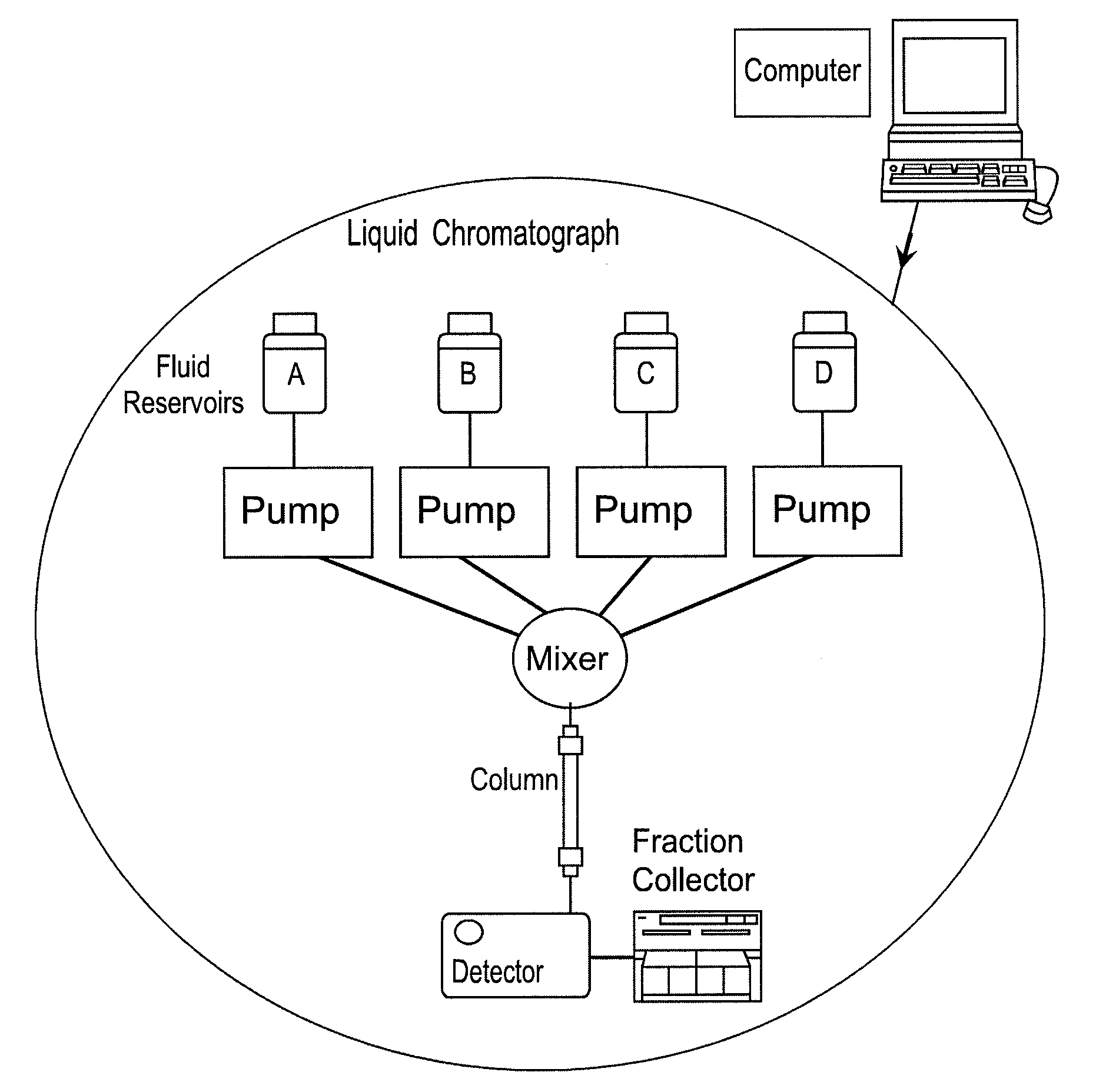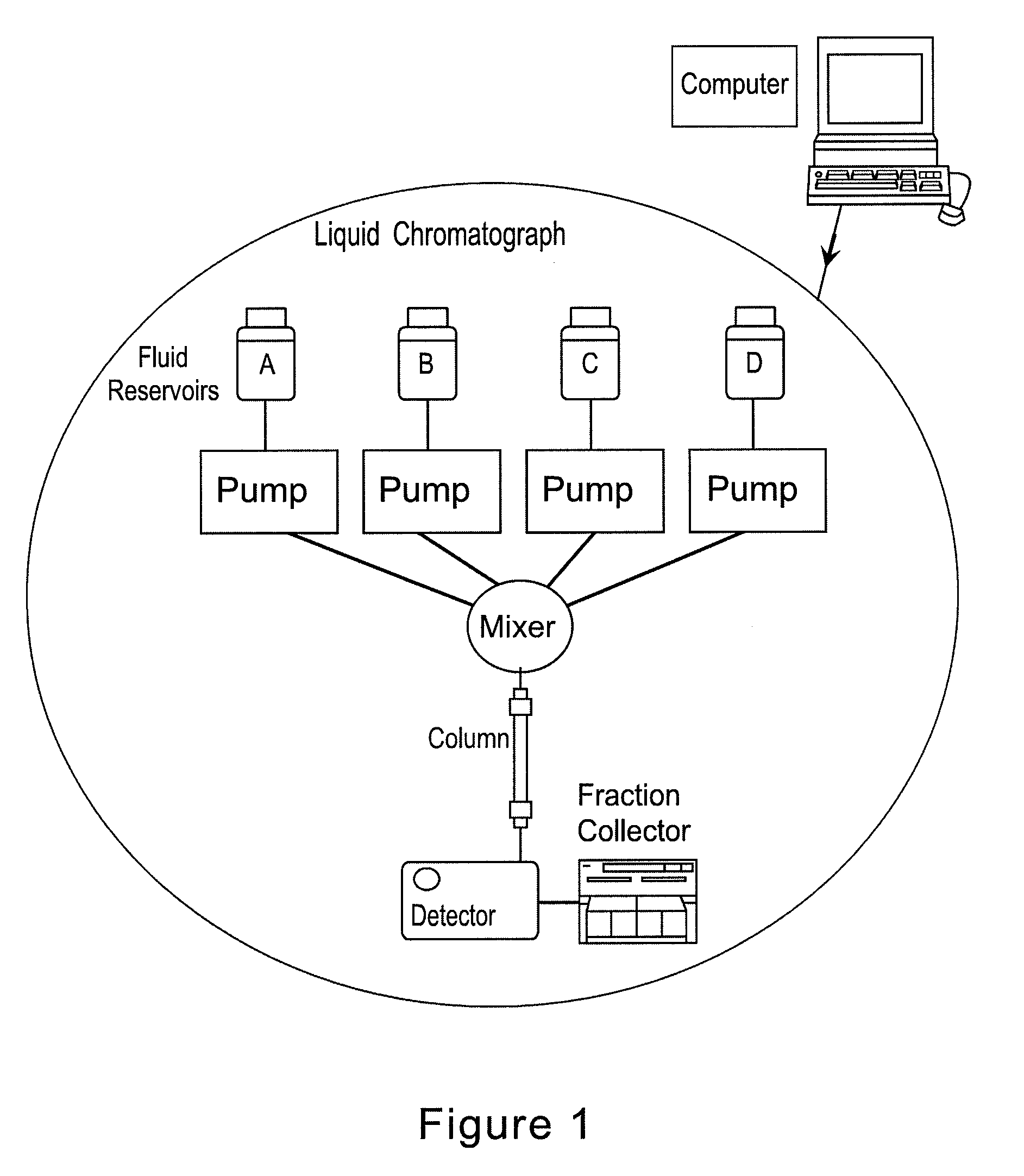Multi-Component, Simultaneous, Independent Multi-Gradient System for Liquid Chromatography
a liquid chromatography and multi-gradient technology, applied in the direction of electrostatic separation, feed/discharge of settling tanks, refining by electric/magnetic means, etc., can solve the problem of inability to adapt to the current literature source or the manufacturer of liquid chromatographic systems, and achieve the effect of improving the separation of analytes
- Summary
- Abstract
- Description
- Claims
- Application Information
AI Technical Summary
Benefits of technology
Problems solved by technology
Method used
Image
Examples
Embodiment Construction
[0013] In the following embodiments of the invention, reference is made to a particular set of buffers denominated as pISep buffers. pISep buffers are buffer compositions characterized by buffering components having overlapping pKa's throughout a target range of pH, and wherein the molar proportion of each component remains constant or varies throughout the transition between an initial pH and a final pH, wherein each buffering component contains at least one functionality selected from the group consisting of amino, amido, imino, imido, carboxylic, sulfonic, phosphoric and phosphonic. Furthermore, each buffering component is present in a concentration of 0.001 mM to 1000 mM. To generate pH gradients controlled by software, external to a chromatographic column(s), an acid pISep buffer is prepared by titrating the pISep buffers to a lower pH limit by using a strong acid, and a complimentary basic pISep buffer is prepared by titrating the pISep buffers to an upper pH limit by using a ...
PUM
| Property | Measurement | Unit |
|---|---|---|
| Length | aaaaa | aaaaa |
| Concentration | aaaaa | aaaaa |
Abstract
Description
Claims
Application Information
 Login to View More
Login to View More - R&D
- Intellectual Property
- Life Sciences
- Materials
- Tech Scout
- Unparalleled Data Quality
- Higher Quality Content
- 60% Fewer Hallucinations
Browse by: Latest US Patents, China's latest patents, Technical Efficacy Thesaurus, Application Domain, Technology Topic, Popular Technical Reports.
© 2025 PatSnap. All rights reserved.Legal|Privacy policy|Modern Slavery Act Transparency Statement|Sitemap|About US| Contact US: help@patsnap.com



